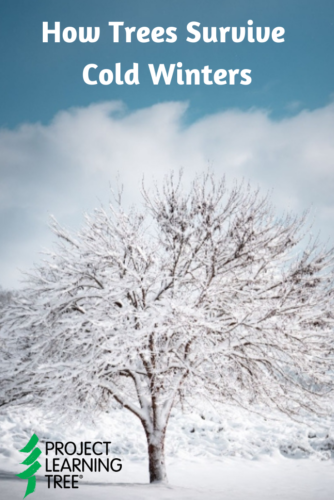
Unlike animals, trees can’t seek shelter in the winter. How do different kinds of trees adapt to the cold? For trees in warmer areas of the country, why wouldn’t they be able to handle freezing temperatures?
Let’s first have a quick look at the basic biology of trees to better understand the changes that happen to trees during winter.
Parts of the tree and their functions: crown, trunk, and roots
All trees around the world share three core parts that play their own role in the life of a tree: the roots, the trunk, and the crown.
Take a closer look at trees with children with PLT’s free family activities, The Closer You Look, Tree Cookies, and Tree Factory, and be sure to check out the full versions of the activities (and many others!) in PLT’s new flagship curriculum, the Explore Your Environment: K-8 Activity Guide.
- The roots are the tree’s support system that anchors it to the ground. Roots gather water and nutrients from the soil and transport them to the other parts of the tree.
- The crown is made of branches and leaves and acts as the tree’s powerhouse. Leaves produce the tree’s food by converting sunlight into energy through photosynthesis. Food that’s not immediately needed gets stored as starch in the roots and can be used later.
- The trunk is like a central pipeline that makes this exchange possible, and it protects this vital flow from the elements with its hard cover.
About half of the tree volume is water, and as we know, water freezes at 32°F. This is important to remember as we investigate deeper into the series of changes trees undergo when the temperatures drop.
Two types of trees: deciduous and evergreen trees
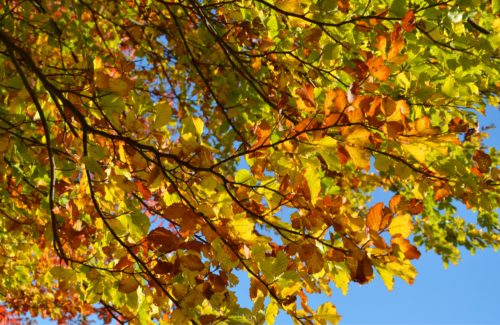
There are two types of trees: deciduous and evergreen. Deciduous trees are the soft and broadleaf trees that drop their leaves once a year, including trees like oaks, maples, birches, and willows.
Evergreen trees, as the name suggests, are green throughout the year, and do not drop all their leaves at once. When thinking of evergreen trees, images of a fir, spruce, or pine tree may come to mind.
For grades 3-5, the full Tree ID activity found in PLT’s Explore Your Environment: K-8 Activity Guide provides step-by-step instructions for students to collect different kinds of leaves and sort them into groups to compare and contrast them. They’ll learn about leaves and other characteristics they can use to identify deciduous and evergreen trees.
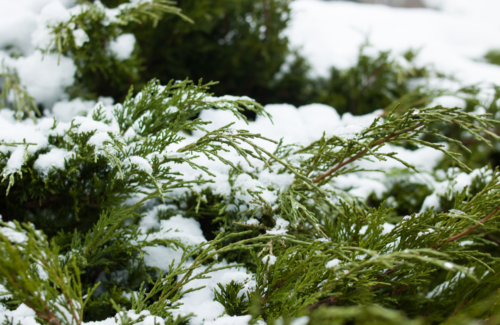
Most evergreen trees have needles, but some have leaves. Both evergreen tree needles and leaves are covered in a wax-like coating, and as a result, are more efficient at retaining water than deciduous trees — allowing evergreens to survive cold temperature more easily.
Although we often picture evergreen trees as living in areas with very cold winters, other trees like the live oak that is widespread in warmer areas in the U.S., and many tropical rainforest trees are also evergreen, including Brazilian ironwood and Suriname cherry trees.
Preparing for the winter
Trees, as well as animals and humans, get their cues to start preparing for the winter from two sources: changes in temperature and the amount of sunlight available each day. As the temperatures drop and days get shorter, trees start to take protective measures that help them survive the upcoming cold of the winter.
Slowing down to save energy
Trees produce their own “food” by using the chlorophyll in their leaves to capture energy from the sun in a process called photosynthesis. Fewer sunlight hours mean there is less time for the tree to produce food through photosynthesis, so it has to go into an energy-saving mode. For trees, this is called dormancy. The tree essentially sleeps over winter, similar to how some animals—such as bears, snakes, or squirrels—hibernate during the cold months.
To do this, a deciduous tree sends most of its vital nutrients to the roots, where they are stored over the winter. This is when it gets ready to drop its leaves.
With colder temperatures and shorter days, chlorophyll (the green pigment in leaves) also starts to break down, and other leaf pigments begin to show through or accumulate, creating the magnificent fall colors we enjoy.
For grades 3-5, the Signs of Fall activity found in PLT’s Explore Your Environment: K-8 Activity Guide provides step-by-step instructions to conduct an investigation to discover why the leaves of deciduous trees change color in the fall.
Handling below freezing temperatures
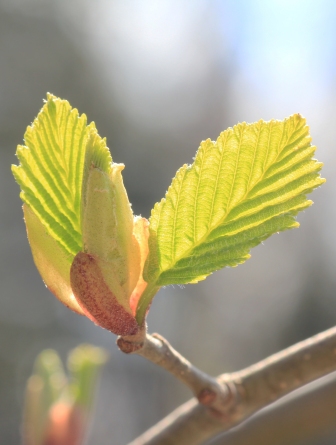
Remember that water freezes at 32º Fahrenheit! And as anyone who has ever forgotten a glass bottle in a freezer knows, water expands when it freezes. The same expansion happens in the water in a tree’s leaves, where water content is highest. As a protective measure to prevent the leaves from breaking, deciduous trees drop their leaves altogether. In the fall before each winter, the cells at the base of each leaf stem begin to die, forming a barrier that keeps water and nutrients from traveling to the leaf.
Did you know that at the same time, a deciduous tree’s leaves for the next spring are already being formed? The immature leaves, stems, and sometimes even flowers are located on the twigs in packages called buds, protected by tough scales that form a waterproof case around these immature tree parts.
For grades K-2, the Bursting Buds activity found in PLT’s Explore Your Environment: K-8 Activity Guide takes children through the process as they conduct an investigation to discover how trees form leaves.
Evergreen trees hold less water in their leaves and have a protective wax-like coating. That reduces the risk of freezing, so evergreen trees keep their leaves (or needles) throughout the winter. This way, they can also continue to produce energy through photosynthesis (although at a slower rate due to less sunlight availability).
Controlling the ice
Even as these protective measures help trees prepare for winter, below-freezing temperatures are still a challenge. Although the most immediate danger of broken leaves has been solved, there is still a lot of water in the trunk and branches that can cause damage to a tree. That’s why trees have functions to protect them even further from the cold! These functions are microscopic, cellular-level changes that control when and where the ice forms within the tree and its cells.
Cells are the building blocks of all living creatures, and trees have trillions of them. During the freezing months, a tree will move water from inside the cells into the space between them. Even if the water freezes in these in-between spaces, the cells themselves and their vital ability to function remain intact. This process of intentional dehydration is another defense against freezing temperatures.
The leaves of evergreen trees contain chemicals that act as antifreeze, binding and preventing ice from forming inside the leaves. These chemicals are what give evergreens their characteristic scent.
Are all trees equally cold-resistant?
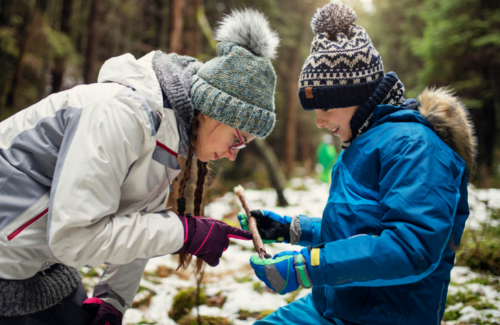
Some trees in warmer areas would not be able to handle the freezing temperatures that their northern relatives do every year. Why is that?
That’s because trees have evolved to live in-sync with their natural environment over thousands of years, adapting to the natural rhythms of their native area’s seasons. This has made the tree species in higher latitudes and colder climates more tolerant to freezing weather than the trees in more temperate or tropical areas. Some trees, like live oak, can survive temperatures to 20ºF, whereas a black willow can withstand temperatures as cold as -50ºF.
This is a little bit like having a winter wardrobe—you only need one if you live in a place with cold, harsh winters! Those living in the southern, more temperate parts of the country don’t usually have the same need for warm layers—and they would find a sudden cold spell much more difficult to deal with.
When you are out with children during this time of the year, encourage them to observe the trees and think about all the invisible processes taking place below the surface of a leaf or trunk. Whether it’s a tree that’s just about to drop its leaves, or one that’s perhaps already under a snow coat, there’s always more than meets the eye!
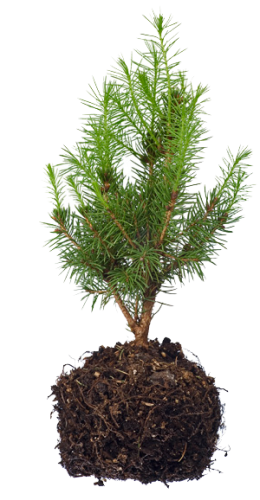
PLT has several great activities found in Explore Your Environment: K-8 Activity Guide to help children learn how trees change and adapt to the seasons, for example:
- Adopt a Tree for grades K-2. Students select individual trees to observe over time. They use journals to record observations and answer questions about their trees, deepening their awareness of changes.
- Bursting Buds for grades K-5 gets students outside, observing tree buds over time and learning about the developmental stages of leaf buds throughout the year.
- Signs of Fall can be used with grades 3-8. It includes background information on the various responses of plants to colder temperatures and shorter days, as well as step-by-step instructions for a hands-on investigation that students can conduct to discover why and how leaves change color in autumn.



3 comments on “How Trees Survive Cold Winters”
Beautiful curriculum…I particularly like the year round opportunity to observe and journal about particular trees.
This article is so well written and explains it in very simple ways! Thank you for the great resources 🙂
As a former educator and teacher of Botany at the University level, I cannot praise this enough.